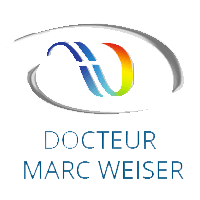Yes, in all cases, for drops do not prevent in any manner cataract onset or progression.
There is no inferior or upper limit. It’s not so much the age that counts as visual function decrease and discomfort. Cataracts appear earlier and earlier for unknown reasons, and trend to progress quicker in younger patients.
Nevertheless age and potential concomitant visual defect can influence the choice of the intra ocular lens that will replace the removed crystalline lens.
Yes, regardless of age and health, for in nearly all patients the procedure is performed under local anaesthesia, by anaesthetic drops instillation.
The only reasons why surgery would be inappropriate are insufficient visual discomfort and/or concomitant ocular disease that would not permit a postoperative significant visual acuity improvement.
There is a common confusion between laser and ultrasounds. Nowadays cataract surgery is generally performed by ultrasound phacoemulsification, which consists in cataract aspiration and removal through a 2mm incision. This procedure is commonly but wrongly called cataract laser surgery.
True laser energy (femtosecond laser) has been recently introduced in cataract surgery. Though it still cannot complete the entirety of the procedure – which is still based on phacoemulsification through ultrasounds – it can nonetheless serve as a substitute for the surgeon’s hand to perform several surgical steps. This laser is especially useful in making corneal incisions and in opening the anterior capsular. It also prepares the fragmentation of the crystalline nucleus before its suction by phacoemulsification. All these steps are controlled by an ocular imaging performed in real time.
No, for it is performed under local anaesthesia, by anaesthetic drops instillation with frequent use of simultaneous IV sedation.
During the procedure, an operating field covers the patient’s head. The non-operated eye cannot see any instrument; it is the same for the operated eye that is dazzled by the surgical microscope light.
Generally no, unlike refractive surgery.
Nevertheless both eyes can have surgery performed in a very short period of time in case of specific patient request or important preoperative concomitant refractive error, in order to allow fast visual comfort rehabilitation.
Cataract surgery causes more discomfort than true pain; visual rehabilitation is fast, taking several hours to one day.
The answer depends upon the chosen intra ocular lens.
Monofocal lenses correct vision at a certain distance. They allow uncorrected vision either at distance or at near, and in return they require spectacles respectively at near or at distance.
Increased depth of field and multifocal intra ocular lenses allow partial or total spectacle independence, but they are prohibited in case of concomitant ocular disease, especially macular, and they usually induce side effects (glare, vision fluctuation, halos); They cannot be used on all patients and appropriate preoperative selection is mandatory.
Intra ocular lenses have a physicochemical stability that exceeds by far life expectancy. They therefore do not need to be replaced.
However what is called a secondary cataract can occur in one patient out of two or three within 5 years post-surgery. It consists in a late clouding of the envelope in which the implant is placed. In such cases, the immediate postoperative visual result is quite satisfactory. However, the visual acuity then begins to drop, as the cataract had reappeared. This complication does not require a reoperation and is easily resolved by a secondary opening of the posterior capsule with a YAG laser. This one-minute long procedure is painless and clears once more the visual axis, thereby resulting in a final and almost immediate restoration of the visual acuity obtained post-surgery.
Resume work and driving are fully permitted the day after surgery. Swimming and combat sports should not be practiced during a month regardless the technique.
Make-up is permitted after a week, as well as sun exposure, provided sunglasses are worn.
Rehabilitation is therefore extremely fast, for patient major happiness and satisfaction.
